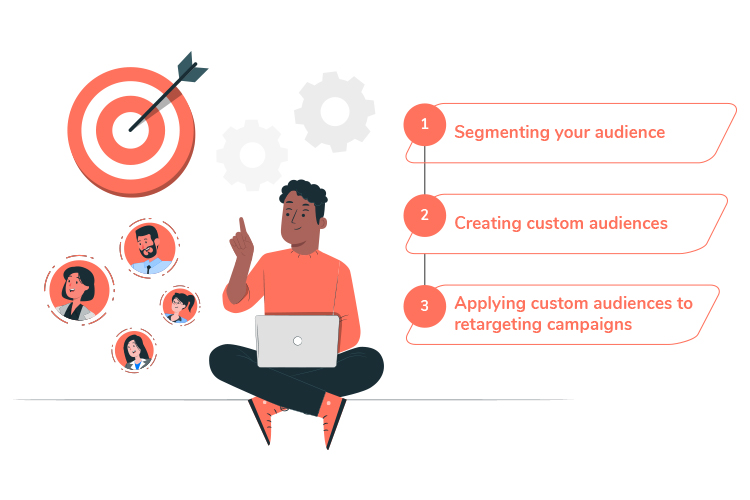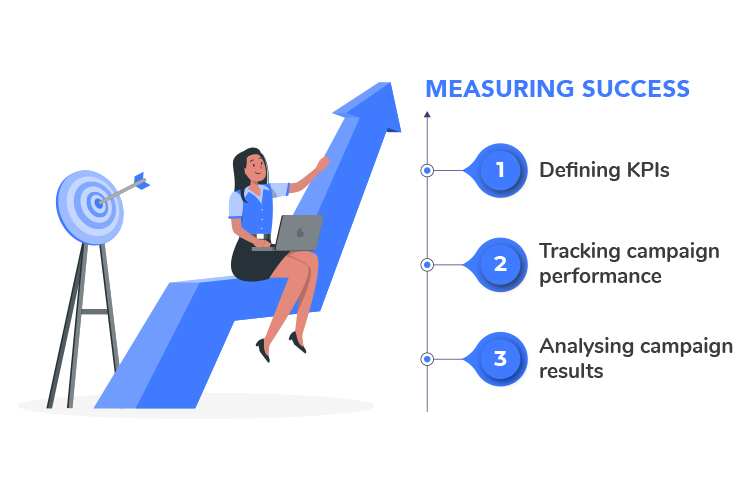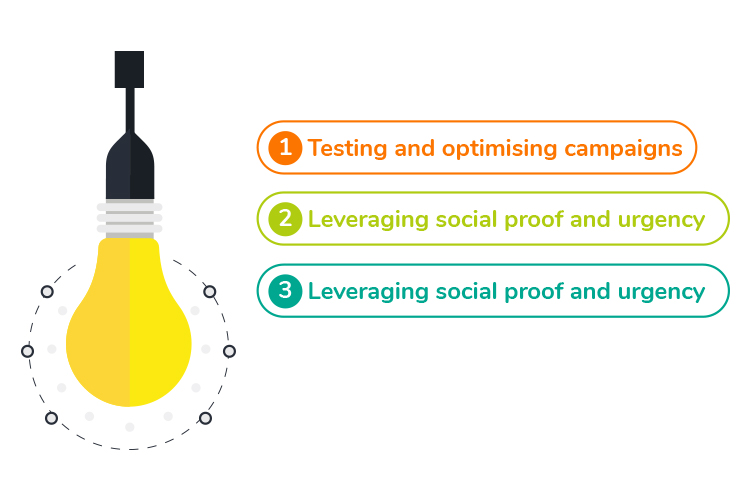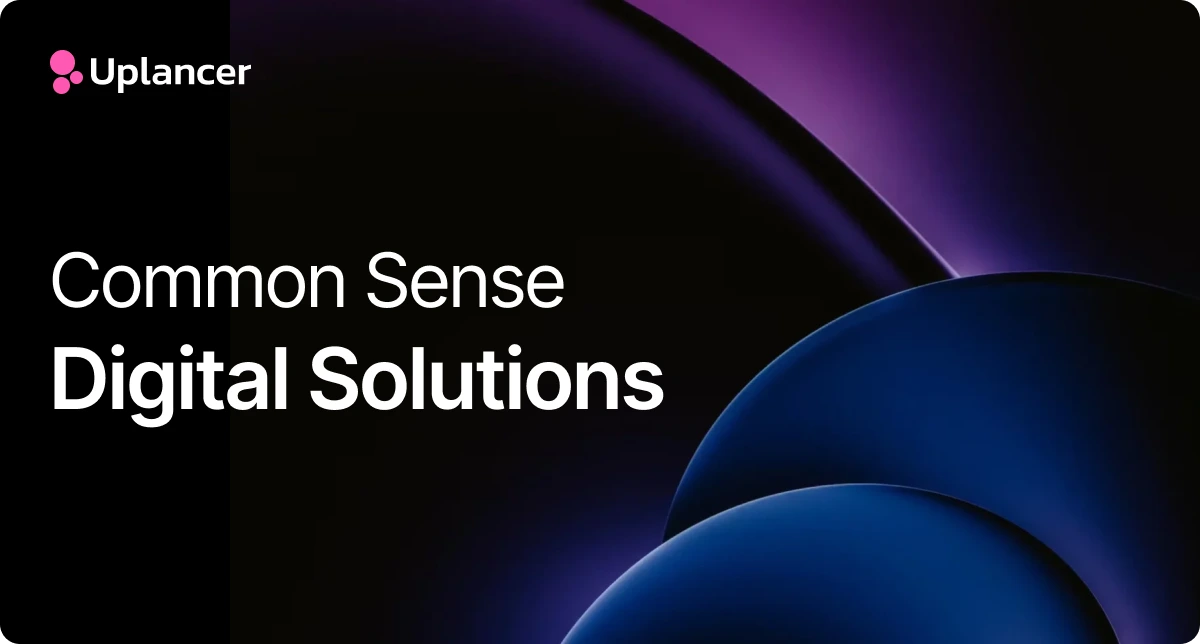How to Use Retargeting in Your Funnel to Bring Back Lost Customers

Retargeting, also known as remarketing, is a digital marketing technique that allows you to show ads to users who have previously interacted with your brand online. This technique helps bring back lost customers and increase your overall conversion rates.
In this blog, we’ll explore how you can use retargeting in your marketing funnel to bring back lost customers and increase your sales.
Retargeting works by placing a small piece of code, also known as a pixel, on your website. This pixel then tracks users who visit your site and allows you to show them ads on other platforms, such as social media or Google.
By using retargeting, you can target users who have shown an interest in your brand and encourage them to come back and complete a desired action, such as making a purchase or filling out a form.
Why it’s important to use retargeting in your marketing funnel
Retargeting is important in your marketing funnel because it allows you to target users who have already shown an interest in your brand. These users are more likely to convert compared to users who have never interacted with your brand before. By targeting these users with personalised ads and offers, you can increase your conversion rates and generate more revenue for your business.
In this blog, we’ll cover the following topics:
- Understanding your audience
- Crafting your retargeting strategy
- Creating custom audiences
- Measuring success
- Tips and tricks for effective retargeting
By the end of this blog, you’ll have a solid understanding of how retargeting works and how you can use it to bring back lost customers and increase your sales. So, let’s dive in!
Understanding Your Audience

Before you start crafting your retargeting strategy, it’s important to understand your audience. By understanding your audience, you can create personalised messaging and offers that resonate with them, increasing the likelihood of conversion. Here are the key sub-points to consider:
Identifying your target audience
Identifying your target audience involves understanding who your ideal customer is. This includes demographic information such as age, gender, location, and interests. By identifying your target audience, you can create targeted ads that speak directly to them and their needs.
Analysing audience behaviour
Analysing audience behaviour involves understanding how users interact with your website and brand. This includes metrics such as pageviews, time on site, and bounce rates. By analysing audience behaviour, you can understand which pages and offers are most popular, and use this information to create personalised retargeting ads.
Defining customer personas
Defining customer personas involves creating fictional representations of your ideal customers. This includes demographic information, as well as information on their goals, pain points, and buying behaviour. By creating customer personas, you can create messaging and offers that speak directly to their needs, increasing the likelihood of conversion.
Overall, understanding your audience is crucial to creating effective retargeting campaigns. By identifying your target audience, analysing audience behaviour, and defining customer personas, you can create personalised messaging and offers that speak directly to your audience and increase your overall conversion rates.
Crafting Your Retargeting Strategy

Crafting an effective retargeting strategy involves choosing the right channels, creating ad messaging that resonates with your audience, and developing offers that motivate them to take action. Here are the key sub-points to consider:
Choosing retargeting channels
Choosing the right retargeting channels involves understanding where your audience spends their time online. This includes social media platforms, Google AdWords, and other display ad networks. By choosing the right channels, you can ensure your retargeting ads are seen by the right people at the right time.
Creating ad messaging that resonates
Creating ad messaging that resonates with your audience involves understanding their pain points, needs, and goals. By creating messaging that speaks directly to these factors, you can increase the likelihood of conversion. Personalization is key when it comes to ad messaging, so consider using dynamic ads that change based on the user’s behaviour on your website.
Developing offers that motivate
Developing offers that motivate your audience involves understanding what drives them to take action. This includes discounts, free trials, and other incentives. By creating offers that are relevant to your audience and provide value, you can increase the likelihood of conversion.
Overall, crafting an effective retargeting strategy involves choosing the right channels, creating personalised ad messaging, and developing offers that motivate your audience to take action. By following these key sub-points, you can create retargeting campaigns that bring back lost customers and increase your overall conversion rates.
Creating Custom Audiences

Creating custom audiences is a crucial aspect of any successful retargeting campaign. By segmenting your audience and creating custom audiences, you can ensure that your retargeting ads are seen by the right people at the right time. Here are the key sub-points to consider:
Segmenting your audience
Segmenting your audience involves breaking them down into smaller groups based on demographics, behaviour, and other factors. This allows you to create more personalised retargeting campaigns that are tailored to the specific needs and interests of each group. Some common ways to segment your audience include age, gender, location, interests, and past behaviour on your website.
Creating custom audiences
Creating custom audiences involves using tools like Facebook Ads Manager or Google Ads to create specific audiences based on the segments you have identified. This can include creating audiences based on website visitors who have abandoned their cart, people who have engaged with your social media posts, or those who have signed up for your email list. By creating custom audiences, you can create retargeting campaigns that are highly relevant and personalised.
Applying custom audiences to retargeting campaigns
Once you have created your custom audiences, you can apply them to your retargeting campaigns. This allows you to show highly targeted ads to people who have already shown an interest in your brand. For example, you can create retargeting ads that show a special discount code to people who have abandoned their cart or showcase a new product to people who have previously purchased from your website. By using custom audiences, you can increase the likelihood of conversion and bring back lost customers.
Overall, creating custom audiences is an essential aspect of any successful retargeting campaign. By segmenting your audience, creating custom audiences, and applying them to your retargeting campaigns, you can create highly personalised and targeted ads that bring back lost customers and increase your overall conversion rates.
Measuring Success

Measuring the success of your retargeting campaign is critical to determining its effectiveness and making necessary adjustments. Here are the key sub-points to consider:
Defining KPIs
Defining Key Performance Indicators (KPIs) is the first step in measuring the success of your retargeting campaign. KPIs should align with your campaign objectives and should be measurable. Some common KPIs for retargeting campaigns include click-through rates, conversion rates, and return on ad spend (ROAS). By defining KPIs, you can set specific goals for your campaign and track its progress towards achieving them.
Tracking campaign performance
Once you have defined your KPIs, it’s essential to track campaign performance to determine if your retargeting efforts are delivering the desired results. This involves monitoring metrics such as impressions, clicks, and conversions. You can use tools like Google Analytics or Facebook Ads Manager to track these metrics and gain insights into how your campaign is performing.
Analysing campaign results
Analysing the results of your retargeting campaign is crucial to understanding what worked well and what needs improvement. By analysing campaign results, you can identify patterns in user behaviour, such as which ads are performing well or which landing pages are converting at a higher rate. This information can help you refine your retargeting strategy and make data-driven decisions to optimise your campaign performance.
Overall, measuring the success of your retargeting campaign is critical to understanding its effectiveness and making necessary adjustments. By defining KPIs, tracking campaign performance, and analysing campaign results, you can gain valuable insights into your audience’s behaviour and improve your retargeting strategy to bring back lost customers and increase conversions.
Tips and Tricks

To maximise the effectiveness of your retargeting campaigns, here are some additional tips and tricks to consider:
Testing and optimising campaigns
Testing and optimization are critical to the success of any marketing campaign, including retargeting. A/B testing different ad variations and landing pages can help you identify what works best with your audience and improve your campaign performance. Optimization involves making continuous improvements to your campaign based on the insights you gain from testing.
Leveraging social proof and urgency
Leveraging social proof and urgency in your retargeting campaigns can help motivate lost customers to take action. Social proof can be in the form of testimonials or reviews from satisfied customers, while urgency can be created by setting time-bound offers or limited-time discounts. By leveraging social proof and urgency, you can create a sense of FOMO (fear of missing out) and encourage customers to complete their purchase.
Balancing frequency and annoyance
Retargeting campaigns can quickly become annoying if they’re too frequent or poorly targeted. It’s essential to strike a balance between reminding lost customers of your brand and bombarding them with ads. One way to avoid annoying your audience is by setting frequency caps, limiting the number of times an ad is shown to an individual. Another approach is to use segmentation to target specific audiences with relevant messaging and offers.
By testing and optimising campaigns, leveraging social proof and urgency, and balancing frequency and annoyance, you can improve the effectiveness of your retargeting campaigns and bring back lost customers.
Conclusion
Retargeting is an essential component of any successful marketing funnel. By targeting lost customers with relevant messaging and offers, you can increase the likelihood of them returning to complete their purchase. Here’s a recap of what we covered in this blog:
We explained what retargeting is and why it’s important to use it in your marketing funnel.
- We discussed the importance of understanding your audience and creating a retargeting strategy that resonates with them.
- We outlined the process of creating custom audiences and applying them to retargeting campaigns.
- We highlighted the importance of measuring campaign success using KPIs and analysing results to make data-driven decisions.
- We provided tips and tricks for testing and optimising campaigns, leveraging social proof and urgency, and balancing frequency and annoyance.
To implement a successful retargeting campaign, it’s essential to take action and get started.
Here are some final thoughts:
- Set clear goals and KPIs for your retargeting campaigns.
- Create compelling ad messaging and offers that resonate with your audience.
- Monitor campaign performance and make continuous improvements based on data-driven insights.
- Use segmentation and frequency caps to avoid annoying your audience.
- Don’t be afraid to experiment and try new approaches.
By following these tips and taking action, you can successfully implement retargeting in your marketing funnel and bring back lost customers. Good luck!












